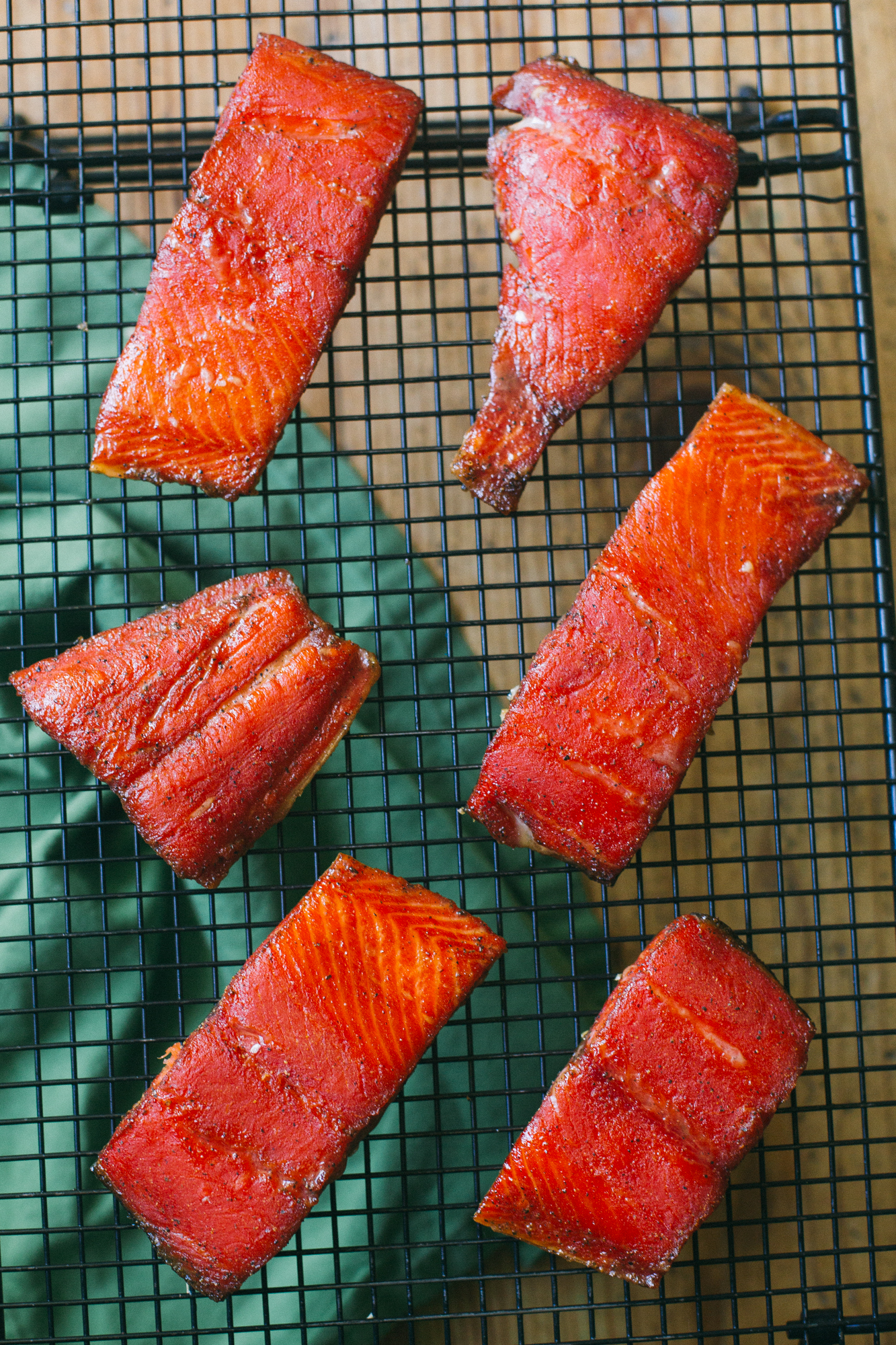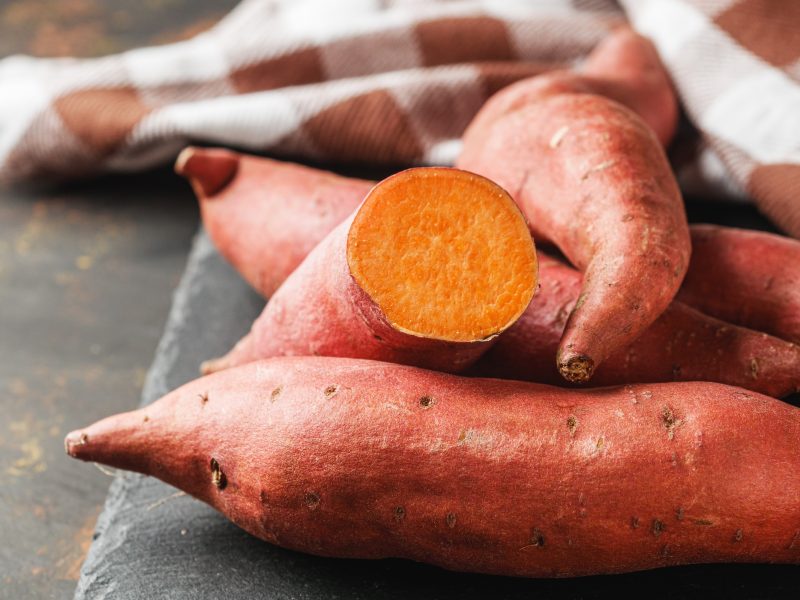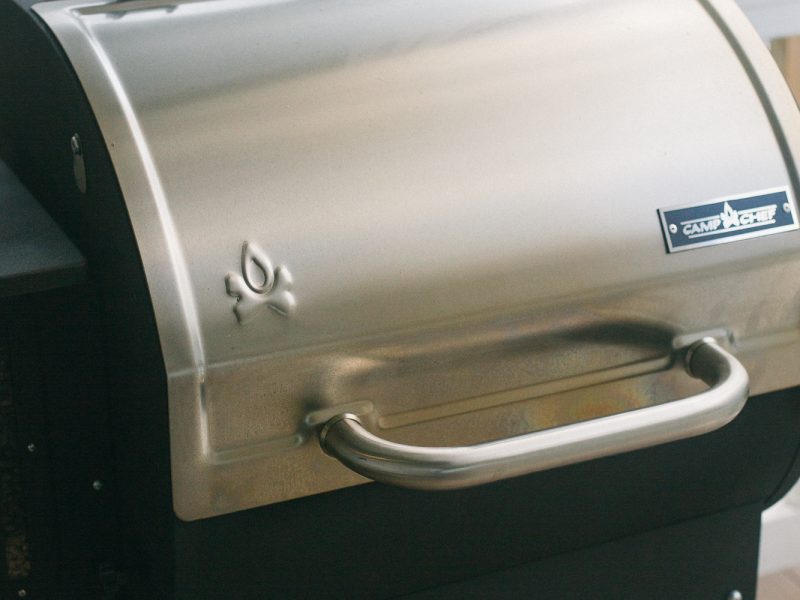To me, cold-smoked salmon (that is, the salmon you often find thinly sliced at your local market) is a relatively recent phenomenon. I grew up in the Pacific Northwest, and firm, meaty, hot-smoked salmon was the only type of smoked fish I had ever experienced until moving away about 20 years ago. Hot-smoked salmon is typically cooked through, and has a flaky texture compared to the soft cold-smoked salmon that most people know.
Traditionally, the indigenous peoples of the Pacific Northwest would smoke their salmon for an extended period, up to two weeks. This staple food would keep indefinitely at room temperature, and had a texture like jerky. You can still find this salmon around, but thanks to refrigeration, many smokehouses in the PNW have adopted a hot smoke method to save time and create a more delicate (albeit perishable) product. My Dad often makes smoked salmon in his little chimney smoker, modeled after this more modern method, and he also sends it to me most years as a Christmas gift. Today I’m sharing a recipe that is similar to his.
There are a few tricks associated with my recipe. First, we’re going to coat the salmon in a dry, sweet-and-salty cure, which will liquefy as the fish marinates for a couple of hours. We’ll then use the liquefied cure to brush onto the salmon as it finishes smoking. This allows us to cure and glaze the salmon with the same concoction, minimizing waste. Additionally, we’ll dry out the salmon before putting it in the smoker, which will form a pellicle (protein coating) that allows more smoke to stick to the fish, resulting in better flavor.
One note: lox and gravlax are often confused with cold-smoked salmon, but they are cured in salt, sugar, and dill, with no smoke added.
For this recipe, I used salmon from my friends at ButcherBox. Their sockeye salmon (a recent addition to their staple offerings of high quality beef, chicken and pork) is wild-caught and sustainable–you can read more about it here. As a bonus, this week they are offering a sweet “Wings for Life” deal with any new signup (which means you’ll get 3 lbs of chicken wings in every box for free, for the lifetime of your subscription). We took advantage of this offer a few years ago and every time the wings arrive in our box I feel like I’m winning the lottery. Check out the promotion here to sign up, but don’t delay, as the offer expires on 2/3/2020 (or while supplies last).
Smoked Salmon (Gluten-free)
1/4 cup maple sugar
3 tbsp kosher salt
1 tsp black pepper
1/2 tsp garlic powder
1/2 tsp paprika
2 lbs wild-caught salmon, skin-on preferred, cut into 2″ lengths
1. In a small bowl, combine the maple sugar, salt, pepper, garlic, and paprika. Pat the salmon pieces dry with paper towels, then place in a wide baking dish; sprinkle the sugar mixture all over the salmon — it’s okay to feel like you’re putting on way too much, a lot will fall off as it marinades. Cover the baking dish and refrigerate for two hours.
2. Remove the salmon pieces from the baking dish and place on a wire rack; at this point, the cure should have transformed into a mostly liquid solution. Pour the solution into a small bowl. We’ll brush this solution onto the salmon near the end of the smoke. Place the salmon in a cool spot (under a fan preferred) for at least 30 minutes, but up to an hour while you prepare your smoker in Step #3.
3. Prepare your grill or smoker for indirect smoking (use the example in this post as a guide), with a goal temperature of 180F (lower that that is good, but try not to go above 200F). Smoke until the salmon reaches an internal temperature of 135F, which will take about 2 hours; about an hour into the smoking process, generously brush the reserved marinade over the salmon. Once the salmon reaches 135F, place it directly on cooling racks to cool to room temperature, about 45 minutes. Place in a resealable plastic bag (or use a vacuum sealer for even better preservation), and serve cold. Enjoy within two weeks if placing in a resealable bag, or up to three months if you vacuum seal it.
** If you don’t have a chance to grab some maple sugar at your local health food store or online, you can use brown sugar instead; be sure to pour in about 1 tbsp of maple syrup into your reserved marinade before brushing it on during Step #3, to impart some mapley goodness.




